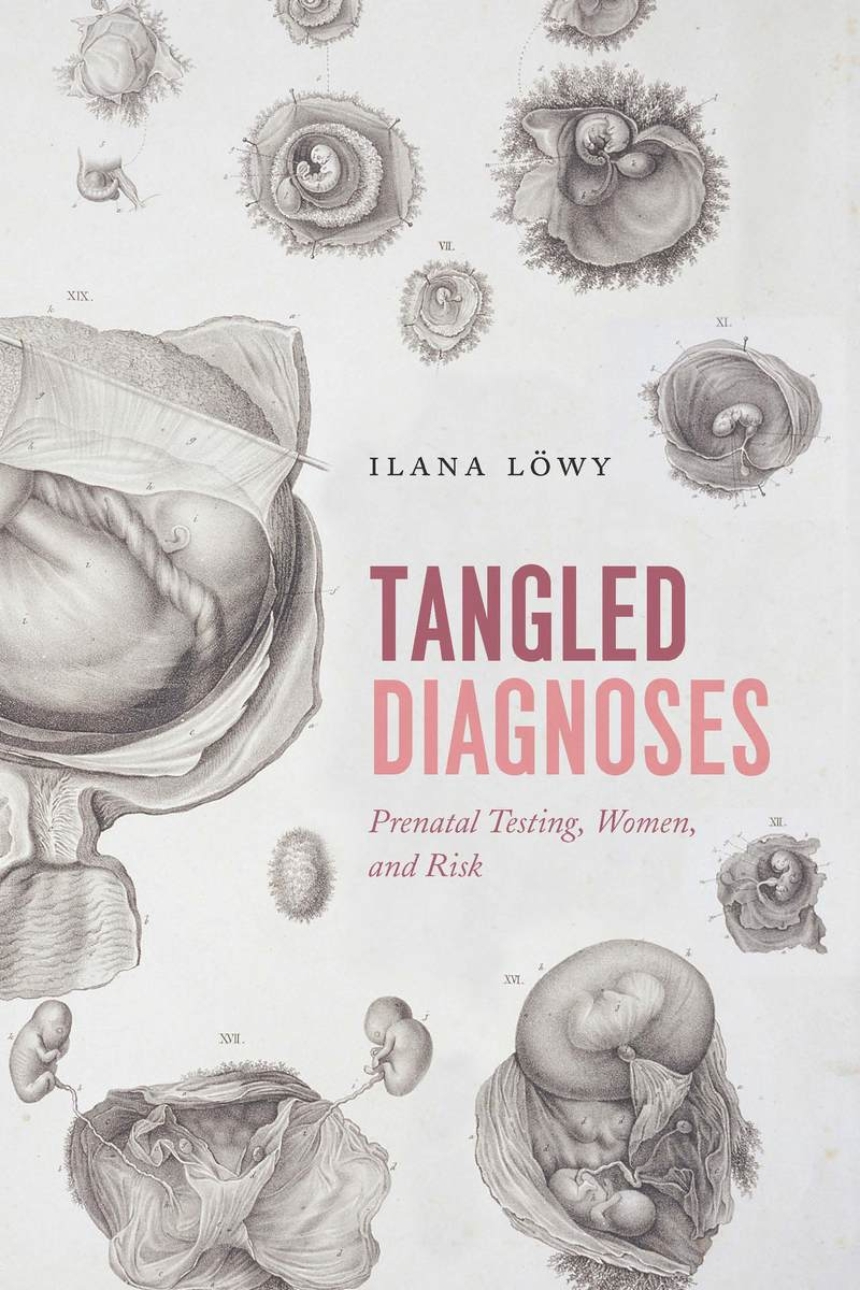Tangled Diagnoses
Prenatal Testing, Women, and Risk
Since the late nineteenth century, medicine has sought to foster the birth of healthy children by attending to the bodies of pregnant women, through what we have come to call prenatal care. Women, and not their unborn children, were the initial focus of that medical attention, but prenatal diagnosis in its present form, which couples scrutiny of the fetus with the option to terminate pregnancy, came into being in the early 1970s.
Tangled Diagnoses examines the multiple consequences of the widespread diffusion of this medical innovation. Prenatal testing, Ilana Löwy argues, has become mainly a risk-management technology—the goal of which is to prevent inborn impairments, ideally through the development of efficient therapies but in practice mainly through the prevention of the birth of children with such impairments. Using scholarship, interviews, and direct observation in France and Brazil of two groups of professionals who play an especially important role in the production of knowledge about fetal development—fetopathologists and clinical geneticists—to expose the real-life dilemmas prenatal testing creates, this book will be of interest to anyone concerned with the sociopolitical conditions of biomedical innovation, the politics of women’s bodies, disability, and the ethics of modern medicine.
Tangled Diagnoses examines the multiple consequences of the widespread diffusion of this medical innovation. Prenatal testing, Ilana Löwy argues, has become mainly a risk-management technology—the goal of which is to prevent inborn impairments, ideally through the development of efficient therapies but in practice mainly through the prevention of the birth of children with such impairments. Using scholarship, interviews, and direct observation in France and Brazil of two groups of professionals who play an especially important role in the production of knowledge about fetal development—fetopathologists and clinical geneticists—to expose the real-life dilemmas prenatal testing creates, this book will be of interest to anyone concerned with the sociopolitical conditions of biomedical innovation, the politics of women’s bodies, disability, and the ethics of modern medicine.
352 pages | 16 halftones | 6 x 9 | © 2018
History: History of Technology
Sociology: Medical Sociology
Reviews
Table of Contents
Introduction / “To See What Is about to Be Born”
One / The Liminal Fetus
Two / Genetics, Morphology, and Difficult Diagnoses
Three / Diagnostic Puzzles: Fetopathology in France
Four / Visible Disasters: Fetopathology in Brazil
Five / Balancing Risks: PND and the “Prevention of Disability”
Six / PND, Reproductive Choices, and Care
Conclusion / A Nonscrutinized Diagnosis
Coda / Minerva’s Owl and Apollo’s Lyre
One / The Liminal Fetus
Two / Genetics, Morphology, and Difficult Diagnoses
Three / Diagnostic Puzzles: Fetopathology in France
Four / Visible Disasters: Fetopathology in Brazil
Five / Balancing Risks: PND and the “Prevention of Disability”
Six / PND, Reproductive Choices, and Care
Conclusion / A Nonscrutinized Diagnosis
Coda / Minerva’s Owl and Apollo’s Lyre
Acknowledgments
Notes
Bibliography
Index
Notes
Bibliography
Index
